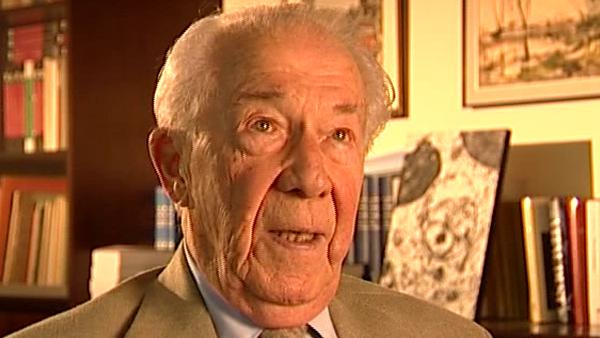NEXT STORY

Acid phosphatase: A new kind of particle
RELATED STORIES

NEXT STORY

Acid phosphatase: A new kind of particle
RELATED STORIES


|
Views | Duration | |
|---|---|---|---|
| 31. Using centrifugal fractionation to locate enzymes | 162 | 03:29 | |
| 32. The first fractionation experiment | 166 | 03:52 | |
| 33. Surprising results of the first fractionation experiment | 170 | 04:14 | |
| 34. Experiments resulting from the 2nd International Biochemistry... | 143 | 02:21 | |
| 35. Experimenting with phenolphthalein | 118 | 03:08 | |
| 36. George Hogeboom and Walter Schneider | 144 | 04:08 | |
| 37. Using Jesuit logic to solve a problem | 323 | 01:39 | |
| 38. Three possible explanations for our findings | 133 | 02:30 | |
| 39. Acid phosphatase: A new kind of particle | 133 | 06:01 | |
| 40. Experimenting with acid phosphatase | 117 | 04:41 |


There were three possible explanations. The first one was that we were doing something wrong and that part of the mitochondria failed to come down with the mitochondrial fraction or that we removed them when we decanted and came down with the microsomes. Second possibility: it just happens to be so that there is some acid phosphatase in the mitochondria and some acid phosphatase in the microsomes; and many other investigators had just taken that as a reasonable explanation for other findings of the same kind. And being simple minded and single minded I thought, well, there could be a third explanation: namely that acid phosphatase is not present in the mitochondria, is not present in the lysosomes, but is present in another particle that happens to be such that two thirds of it comes down with the mitochondria and one third with the microsomes. And... so in order to distinguish between these three explanations, we started... well, first of all we compared the distribution of our enzymes with those of enzymes of known localisation and here's where we come back to Hogeboom and Schneider, in fact even to Claude, because that was already, to some extent, established by... by him earlier. The respiratory enzyme... the enzyme responsible for the uptake utilisation of oxygen in the liver and elsewhere was shown to be exclusively associated with the mitochondria; this had been... cytochrome oxidase as it is now known, the so-called 'atmungsenzyme' respiratory enzyme, as it was named by Otto Warburg, who came before in this story as the mentor of my mentor, Hugo Theorell.
Belgian biochemist Christian de Duve (1917-2013) was best known for his work on understanding and categorising subcellular organelles. He won the Nobel Prize in Physiology or Medicine in 1974 for his joint discovery of lysosomes, the subcellular organelles that digest macromolecules and deal with ingested bacteria.
Title: Three possible explanations for our findings
Listeners: Peter Newmark
Peter Newmark has recently retired as Editorial Director of BioMed Central Ltd, the Open Access journal publisher. He obtained a D. Phil. from Oxford University and was originally a research biochemist at St Bartholomew's Hospital Medical School in London, but left research to become Biology Editor and then Deputy Editor of the journal Nature. He then became Managing Director of Current Biology Ltd, where he started a series of Current Opinion journals, and was founding Editor of the journal Current Biology. Subsequently he was Editorial Director for Elsevier Science London, before joining BioMed Central Ltd.
Tags: Hugo Theorell, Otto Warburg
Duration: 2 minutes, 30 seconds
Date story recorded: September 2005
Date story went live: 24 January 2008